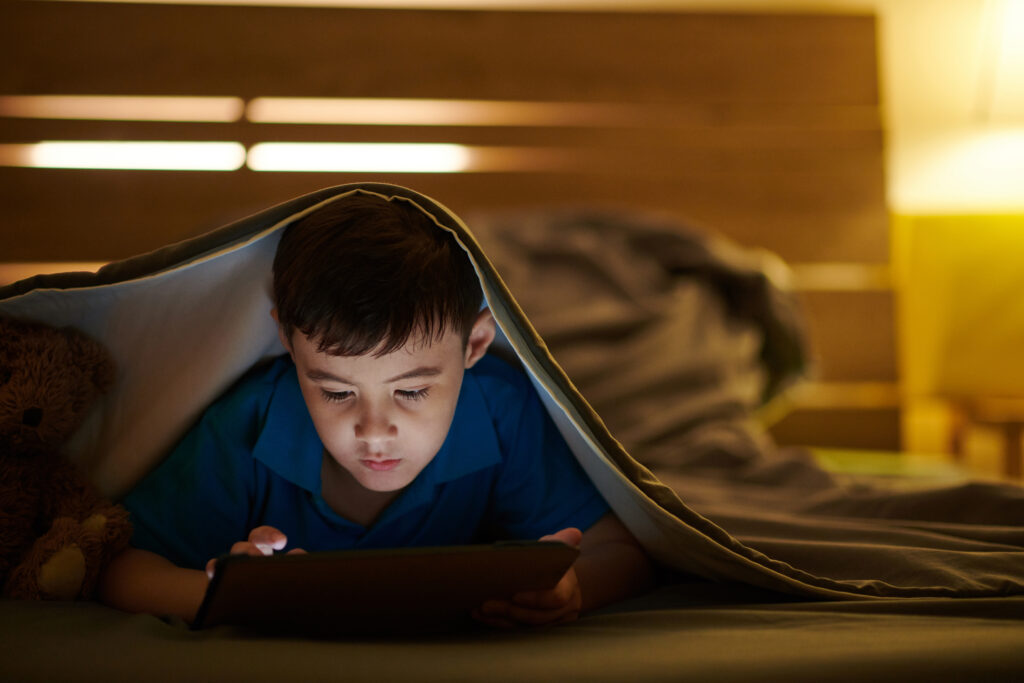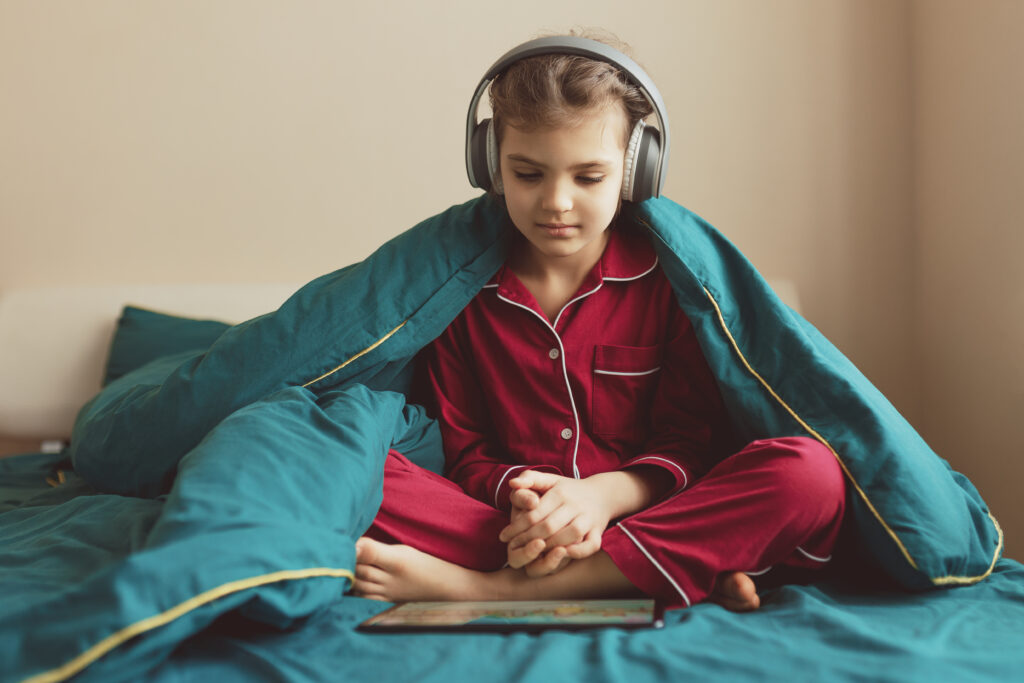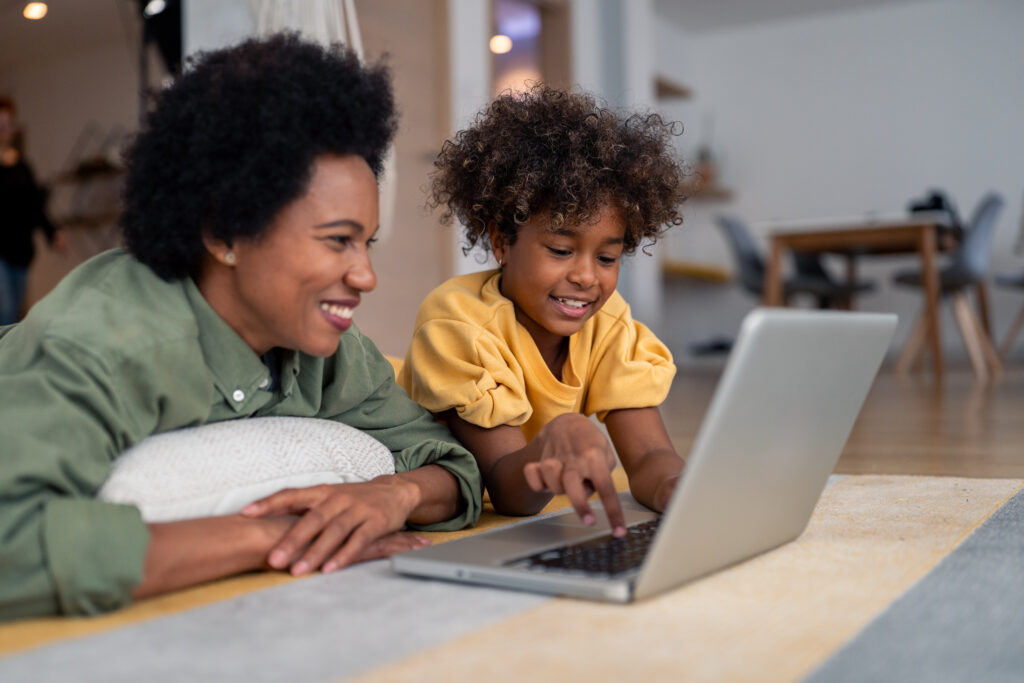How to Balance Screen Time and Reading: Tips for Parents of Reluctant Readers
🎧 Prefer to listen or 📺 watch instead?
This post is also available as a podcast episode and YouTube video.
Let’s be honest: screens aren’t going anywhere.
Whether it’s tablets, TVs, phones, or video games, tech is part of our kids’ everyday lives. And if you’re raising a reluctant reader, it can feel like you’re constantly trying to make books win a losing battle for their attention.
But what if it doesn’t have to be a competition?
In our home, we hit a screen time breaking point last summer. JD was sneaking the tablet every chance he got. Hunter, our youngest, had started demanding game time at bedtime instead of books—he’d go into full meltdown mode if screens weren’t involved. And I was at my limit. Something had to change.
But I also knew I didn’t want to treat screens like the enemy. Because while unbalanced tech can derail a love of reading, intentional use can actually support it.
Here’s how we made the shift—and how you can start using them to foster your child’s reading journey too.
Why Screens Feel Like the Enemy (and What to Do Instead)
For a long time, screens weren’t a big issue in our house. But little by little, I noticed the balance shifting. Suddenly, screens weren’t just a downtime treat—they were replacing books, play, and connection. We’d find JD in his tent or under the bed, glued to a tablet. The boys would resist turning off shows or games, even when it was time for stories or sleep. It’s actually pretty common for kids to resist reading when there are more exciting options available, the key is recognizing what’s behind that resistance.

I wanted to hit the reset button—but I knew eliminating screen time completely would never stick.
Instead of eliminating screens, we started using them as a tool.
And when we did? Everything shifted.
There are incredible screen-based resources that can enhance literacy when used correctly and intentionally.
- Interactive eBooks on Epic!, Skybrary, and apps like The Monster at the End of This Book
- Word games like Wordscapes, Wordle, Boggle, and Crossword Puzzles
- Audiobooks via Libby and Hoopla, or devices like Tonie and Yoto players
One of our best moves was reintroducing the Yoto player to our after-school routine. JD and Hunter would unwind with a snack and a story—no screen needed. It brought back the relaxed vibe I’d been longing for without taking away the tech-inspired experience they were craving.
If you want more ideas like this, subscribe to the From Dread to Read newsletter. Each week, I share one mindset shift, one playful tip, and one trusted resource (including tech-friendly ideas) to make reading feel fun again—even for the most screen-inclined kiddos.
You’ll also love these 12 easy ways to make reading more fun—especially for kids who say they hate it.
Creating Screen Time Boundaries That Actually Work
Let’s talk about the part that gets most of us stuck: setting screen time boundaries that don’t cause WWIII at home.
Here’s what’s worked for us:
1. Identify Your Trouble Zones
For us, it was mornings. Allowing screens before school created chaos and arguments. Once we cut them out completely, the shift in focus (and peace) was almost immediate.
Want more ideas for creating a book-friendly home? This post shares simple tips.
2. Set Clear Expectations Ahead of Time
When kids know the rules ahead of time, they’re less likely to push back. On a remote learning day earlier this year, I gave JD the choice: 30 minutes of Minecraft, followed by the option to switch to Zearn (his favorite Math app for school) or end screen time. Because I set the expectation before the tablet came out—no drama.
That same day I didn’t prep Hunter, when screen time ended, he was devasted—cue the tantrum. Proof that clarity upfront is everything. Lesson learned.
3. Involve the Whole Family in Screen Time Decisions
We’ve tried formal family meetings about tech—and not all of them went smoothly. (Picture eye rolls and kids inching toward their devices mid-conversation.)
But even so, involving everyone in setting the rules helped. We talked about:
- When screens were okay (and when they weren’t)
- What types of screen time were okay
- How much time would be allowed each day
- How we’d keep track (timers, parental controls, etc.)

And yes, I had to check myself too. If I was glued to my phone, asking them to unplug didn’t carry much weight.
Tech Tools That Support Reading
Once we got the boundaries in place, I started looking for ways tech could support our reading life—not compete with it. These are some of our favorite screen-based reading tools:
📱 Make Reading a Game
- Beanstack tracks reading streaks and allows them to join community reading challenges through your participating school or library
- Epic! turns reading into a challenge with badges and “reading buddies”
- Teach Your Monster to Read helps younger readers practice phonics through play. And if you’re in those early literacy years, here’s what you need to know about raising a reader from the start.
📚 Add a “Tech Twist” to Reading Time
- Try scavenger hunts that include reading an eBook or listening to an audiobook
- Use Epic!, Libby or Hoopla to browse and read digital titles
- Watch a book trailer or review on YouTube to build excitement for a new title
🎧 Make Reading Auditory
- Use audiobooks during snack time, bedtime, or car rides
- Try kid-friendly podcast platforms like Storytopia
- Swap your next movie night for an audiobook night—blankets, popcorn, and all

These small changes make books feel like a natural part of tech time—not a chore.
What If Your Kid IS “Screen First”?
If your child would literally do anything other than pick up a book, here’s where to start:
☑️ Begin with Storytelling, Not Books
Let reading sneak in the back door:
- Make up silly stories together at bedtime or mealtime
- Ask, “What happens next?” or “What if you were in the story?”
- Let your child “tell back” a favorite story in their own words
Once stories are flowing again, it’s time to help them find the books that change everything.
🎲 Use Literacy-Rich Games
- Try Scrabble, Zingo, Apples to Apples Jr., Pictionary, or Boggle—they all count
- Create a scavenger hunt with written clues
- Play “Would You Rather?” with written choices
✍️ Use Everyday Activities to Build Reading and Writing
- Have them help write the grocery list or plan the menu for the week
- Let your child help plan their daily agenda, a family trip or a party
- Let them keep a journal, gratitude list, or write and send a family newsletter
- Play make-believe restaurant and let them design a menu and take orders as your waiter/waitress
Reading doesn’t have to look like reading a chapter book on the couch.
Let Them Create Their Own Stories
This is one of the most fun ways to flip the script: invite your child to become the storyteller.
In fact, it’s a project I hope to work on with JD this summer, so he can read it aloud to Hunter.
Here are some tools to get started:
- StoryJumper for writing and illustrating their own digital books
- Story Dice an online tool for generating quick creative prompts
- Canva to design a book cover and images for their story
- ChatGPT to help brainstorm and build out story details

If your child could hold a book they created? That’s next-level reading motivation.
Final Takeaway: Progress, Not Perfection
Balancing books and screens isn’t about strict rules or perfect execution. It’s about intentionality. It’s about asking:
How can I use what my child already loves to invite them into a story.
Start with one tweak, test it, tweak it and try again. Celebrate the wins—yes, even the tiny ones.
Because every screen doesn’t have to pull your child away from reading. Sometimes, it can be the thing that leads them back in.
Want Help Finding That Balance?
🎉 Subscribe to the From Dread to Read newsletter and get:
- One mindset-shift to ease the pressure
- One try-it-now tip to spark fun
- One trusted resource to support your child’s reading journey
Because you don’t have to figure this out alone—and reading can be fun again, even with screens in the mix.
Plus, you’ll be the first to know when new content drops on the blog, podcast or YouTube channel.

Suggested Resources
- 📘 Epic! – a huge digital library for kids that gamifies reading through badges and reading buddies
- 📝Beanstack – track reading minutes and join community challenges through child’s school or library
- 📕 Skybrary – interactive eBook app that brings stories to life
- 📖 The Monster at the End of This Book app – brings an interactive element to the classic story
- 📲Teach Your Monster to Read – phonics-friendly game that makes learning to read fun
- 📱 Libby and Hoopla – free audiobooks and ebooks with a library card
- 🎶 Yoto and Tonie Players – screen-free audiobook players kids can control
- Storytopia – kids podcast app, great for finding new podcasts your kids will love in a safe space
- StoryJumper – foster your child’s creativity, imagination, reading and writing skills by creating their own storybooks
- Story Dice for generating writing prompts to help kids create their own stories
- Canva – a design tool that can be used to create book covers and illustrations for your child’s own writing adventures
- ChatGPT – a great tool for brainstorming writing ideas and creating rough drafts
- Motivating Reluctant Readers Guide – quick, practical strategies (including screen-friendly ideas!) to spark interest and make reading feel like fun—not a fight.
FAQs: Screen Time and Reading
What’s a healthy amount of screen time for kids?
That’s not really for me to say. The American Academy of Pediatrics has their own recommendations based on your child’s age, but ultimately it comes down to your family’s values. Beyond that I believe that the quality of screen use and how it’s balanced with other activities like reading, sleep and movement are perhaps more important.
Can eBooks and audiobooks really count as “real” reading?
Yes, 100%. Audiobooks build vocabulary, comprehension, and listening skills, and eBooks often increase accessibility. Many reluctant readers thrive with these formats—they’re engaging, less intimidating, and align with their tech-friendly habits.
My child only wants to play video games and watch TV, how do I make room for reading?
Start by connecting with what they love. Choose game-related books, let them write their own stories—perhaps about their favorite characters, think fan fiction—or gamify reading by encouraging them to reach reading milestones. Check out the Motivating Reluctant Readers Guide to learn more about using incentives correctly. Gradual shifts work better than sudden rules.
What if screen time always ends in a meltdown?
Meltdowns often happen when transitions are abrupt or expectations. Try giving advance warnings, setting timers, and letting your child be part of the decision-making process around when and how screens are used.
Are there any tech tools that actually encourage more reading?
Yes! Some great examples include:



